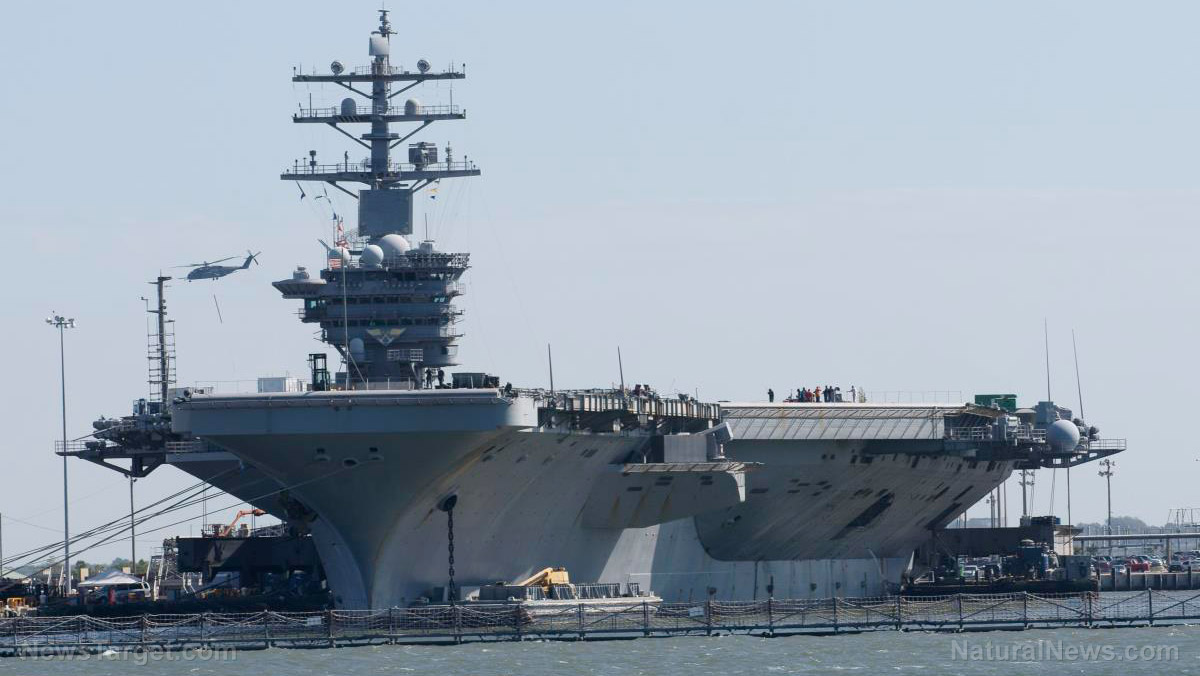Taliban seized billions worth of US weapons in Afghanistan… was it all staged on purpose?
08/20/2021 / By Franz Walker

The Taliban now has its hands on billions of dollars worth of U.S. weaponry following the quick collapse of Afghan security forces trained to use the military equipment.
Photos have been circulating showing Taliban fighters holding U.S.-made M4 and M16 rifles instead of the Russian AK-47s they normally use. Militants have also been spotted using driving U.S. Humvees and mine-resistant ambush-protected (MRAP) vehicles.
In addition, the Taliban is also reported to have seized Black Hawk helicopters and A-29 Super Tucano aircraft.
“Everything that hasn’t been destroyed is the Taliban’s now,” said one U.S. official to Reuters on the condition of anonymity.
A psychological win for the Taliban
While it’s nearly impossible to operate advanced aircraft, such as those left behind in Afghanistan, without training, the seizing of the hardware gives the Taliban a propaganda boost. In addition, it also underscores the amount of money wasted on U.S. military efforts in Afghanistan over the past 20 years. (Related: The government spent BILLIONS to equip Afghan forces, only for American military hardware to end up in Taliban hands.)
“When an armed group gets their hands on American-made weaponry, it’s sort of a status symbol. It’s a psychological win,” explained Elias Yousif, deputy director of the Center for International Policy’s Security Assistance Monitor.
“Clearly, this is an indictment of the U.S. security cooperation enterprise broadly,” Yousif added. “It really should raise a lot of concerns about what is the wider enterprise that is going on every single day, whether that’s in the Middle East, Sub-Saharan Africa, East Asia.”
According to a 2017 Government Accountability Office report, the United States transferred 75,898 vehicles, 599,690 weapons, 162,643 pieces of communications equipment, 208 aircraft, as well as 16,191 pieces of intelligence, surveillance and reconnaissance equipment to Afghan forces between 2003 and 2016.
Meanwhile, a report from the Special Inspector General for Afghanistan Reconstruction (SIGAR) states that the U.S. also gave Afghan forces 7,035 machine guns, 4,702 Humvees, 20,040 hand grenades, 2,520 bombs and 1,394 grenade launchers from 2017 to 2019 alone.
The SIGAR report also confirmed that Afghan forces had 211 U.S.-supplied aircraft in their inventory as of June 30. Of these, at least 46 are now in Uzbekistan after more than 500 Afghan troops used them to flee the country.
Exactly how much U.S. weaponry has fallen into the hands of the Taliban is unknown. That said, the Biden administration has acknowledged that it’s a “fair amount.”
“We don’t have a complete picture, obviously, of where every article of defense materials has gone, but certainly a fair amount of it has fallen into the hands of the Taliban,” said White House national security adviser Jake Sullivan on Tuesday, Aug. 17. “And obviously, we don’t have a sense that they are going to readily hand it over to us at the airport.”
Concerns raised over how left-over US equipment will be used
With large numbers of U.S. equipment now in Taliban hands, concerns are now being raised over how they’ll be used.
Both current and former U.S. officials have raised fears that they’ll be used to kill civilians or be seized by other militant groups, such as the Islamic State, to attack U.S.-interests in the region. Worse, they could even potentially be handed over to U.S. adversaries including China and Russia.
The Biden administration is so concerned about the weapons that it’s now weighing a number of options it may pursue.
Officials have stated that launching airstrikes against some of the larger equipment, such as helicopters, has not been ruled out. However, there are concerns that such strikes would antagonize the Taliban at a time where the U.S.’s main goal is evacuating people.
Others have pointed out that some of the larger equipment, such as helicopters, require frequent maintenance and are too complicated to fly without extensive training.
“Ironically, the fact that our equipment breaks down so often is a life-saver here,” one official said.
Such equipment would be used more as trophies and propaganda boosters.
“In some cases, some of these will be more like trophies,” retired U.S. Army General Joseph Votel said. Votel oversaw U.S. military operations in Afghanistan as head of U.S. Central Command from 2016 to 2019.
Small arms could still give the Taliban an edge
The more immediate concern is about some of the easier-to-use weapons and equipment, such as night-vision goggles and small arms.
“The ability to operate at night is a real game-changer,” said one congressional aide to Reuters.
Meanwhile, the small arms seized by the insurgents, such as machine guns, mortars and even howitzers, could give them an advantage over any resistance that could surface in historic anti-Taliban strongholds. (Related: Taliban immediately moves to confiscate firearms from civilians.)
Another concern is that the Taliban could grant the U.S.’s adversaries, such as China, access to these weapons. Andrew Small, a Chinese foreign policy expert at the German Marshall Fund of the United States said that this outcome was likely.
However, other U.S. officials say that China is not likely to gain much, because Beijing already has access to American weapons and equipment.
Regardless of how the weapons are used, the situation in Afghanistan shows that the United States needs a better way to monitor the equipment it gives to its allies. According to Justine Fliescnher of the U.K.-based Conflict Armament Research, the U.S. could have done much more to ensure that weapons and equipment supplied to Afghan forces was more closely monitored and inventoried.
“But the time has passed for these efforts to have any impact in Afghanistan,” she concluded.
Follow Collapse.news for more on the worsening situation in Afghanistan.
Sources include:
Tagged Under: Afghanistan, China, collapse, government, Joe Biden, military tech, national security, taliban, terrorism, U.S. weapons, war in Afghanistan, weaponry, weapons, weapons tech, White House
RECENT NEWS & ARTICLES
COPYRIGHT © 2018 MILITARYTECHNOLOGY.NEWS
All content posted on this site is protected under Free Speech. MilitaryTechnology.news is not responsible for content written by contributing authors. The information on this site is provided for educational and entertainment purposes only. It is not intended as a substitute for professional advice of any kind. MilitaryTechnology.news assumes no responsibility for the use or misuse of this material. All trademarks, registered trademarks and service marks mentioned on this site are the property of their respective owners.





















